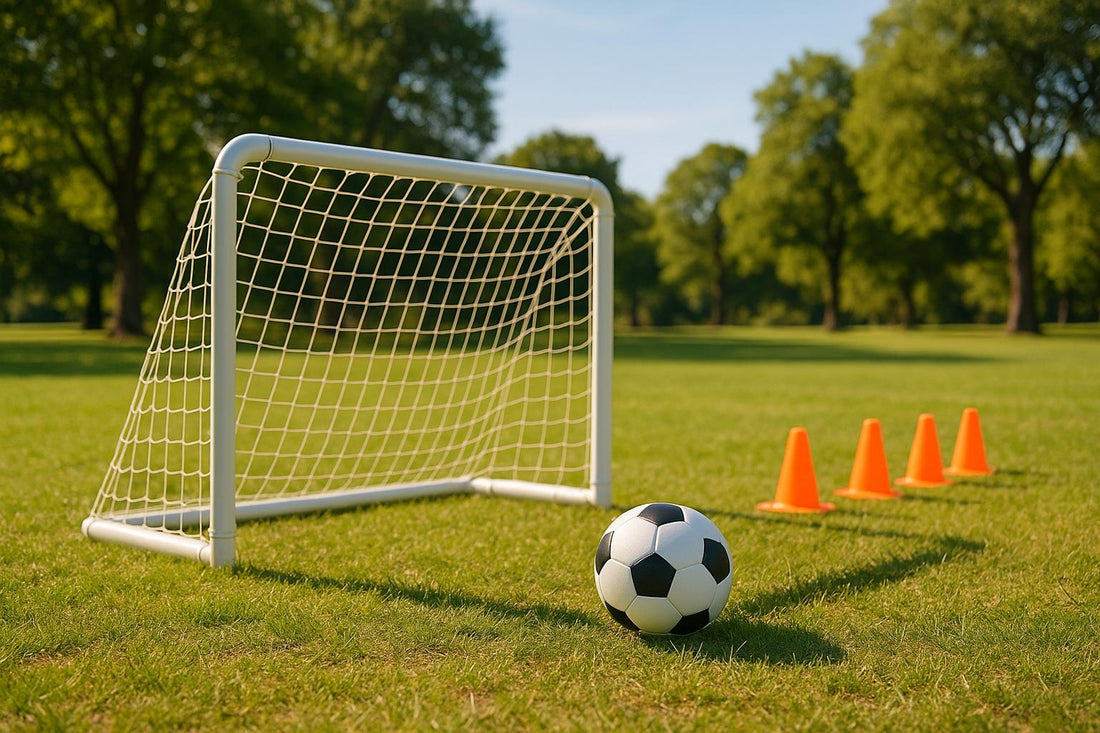
Portable Soccer Games: Setup Tips for Any Location
Portable soccer games make it easy to play soccer anywhere - parks, beaches, driveways, or gyms. With lightweight, foldable goals, quick setups (as fast as 20 seconds), and compact storage, this gear is perfect for families, players, and coaches.
Here’s what you need to know:
- Choose the right equipment: Look for lightweight materials (like fiberglass poles), durable nets, and compact designs.
- Anchoring matters: Use stakes for grass, deeper anchors for sand, and weights for hard surfaces.
- Kickit products: Options like Soccer Tennis sets ($79.99+) are fast to set up and work on multiple surfaces.
- Maintenance tips: Clean after use, store in dry spaces, and check for damage regularly.
- Safety first: Inspect surfaces, anchor goals securely, and adapt the game to players’ skill levels.
Portable soccer gear is simple to set up, easy to store, and works for all ages. Whether for practice or fun, it’s a great way to enjoy soccer on the go.
How-To: Set Up a Bownet Goal
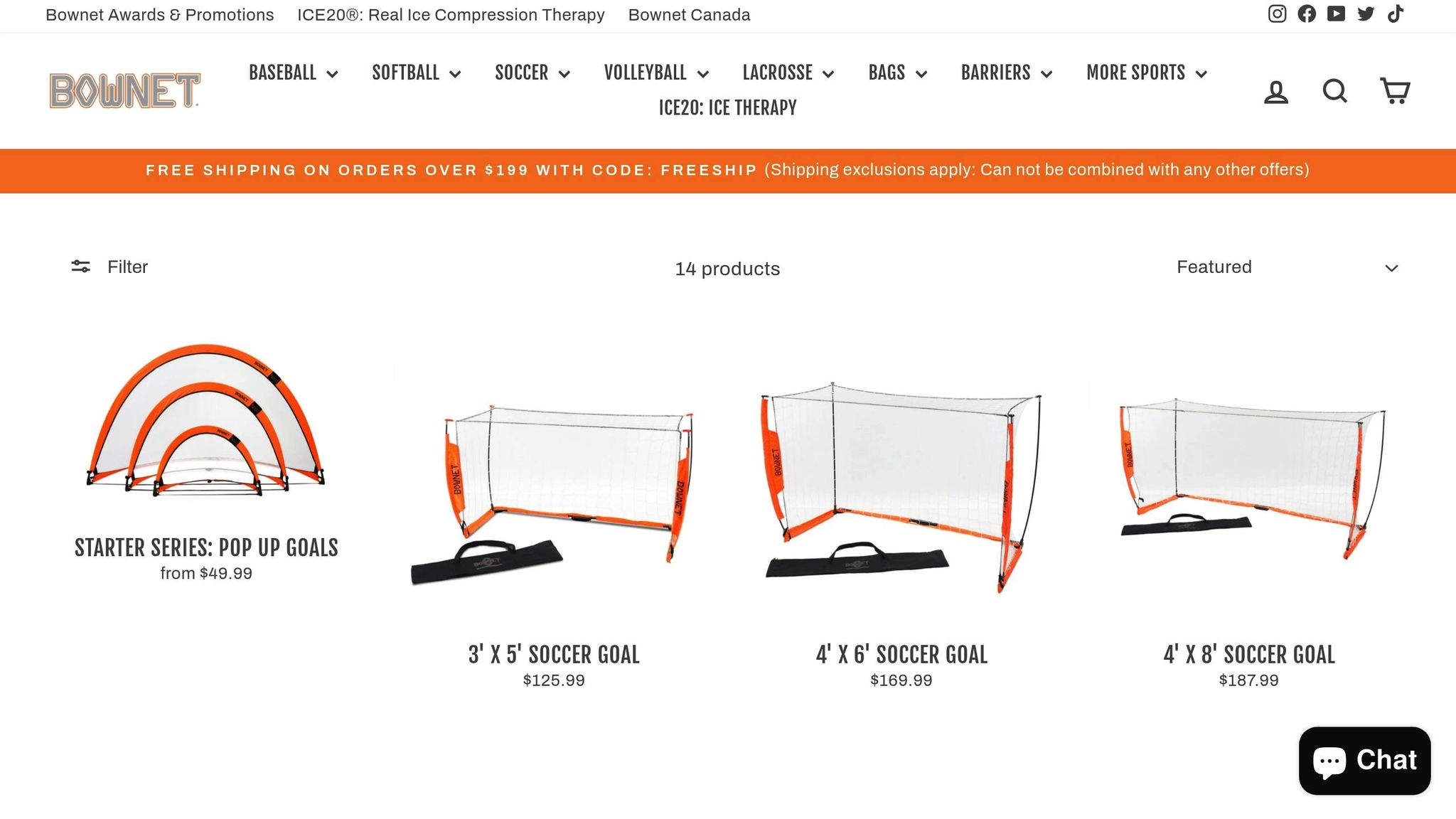
How to Choose the Right Portable Soccer Equipment
Selecting the right portable soccer equipment can turn the hassle of setup into a seamless and enjoyable experience. The trick lies in finding gear that combines portability, durability, and ease of use, all while maintaining top-notch performance.
Key Features to Look For
One of the first things to consider is lightweight materials. Equipment made from materials like fiberglass poles and Oxford fabric strikes the perfect balance between being sturdy and easy to carry. Whether you're heading to the beach, a local park, or just setting up in your backyard, lightweight gear makes transport a breeze.
Durability is another must-have feature. Outdoor soccer equipment faces a lot of wear and tear, from intense gameplay to exposure to the elements. Look for thickened fiberglass poles that resist rust, corrosion, and UV damage. Nets made from 3-ply knotless polyester with reinforced seams are also a solid choice - they can handle tough weather and heavy use.
"Designed to endure harsh outdoor conditions, our thickened fiberglass poles are resistant to rust, corrosion, and UV damage." – MUROZA
Portability isn’t just about weight - it’s also about compact storage. Gear that folds down neatly into a carrying bag is ideal for easy transport and storage, whether you're heading out for a quick game or packing it away for the off-season.
Stability is equally important. Features like ground stakes or anchors ensure that your goals stay secure, even in windy conditions. Without proper anchoring, even the best equipment can pose safety risks.
For convenience, consider complete sets that include everything you need - nets, balls, pumps, cones, and markers. These all-in-one packages save you the trouble of sourcing each component separately and ensure compatibility across all pieces.
Customers have praised these complete sets for being easy to assemble, highly durable, and ideal for quick, on-the-go gameplay. Kickit’s product line, in particular, stands out for delivering portability and performance in one package.
Kickit Product Options
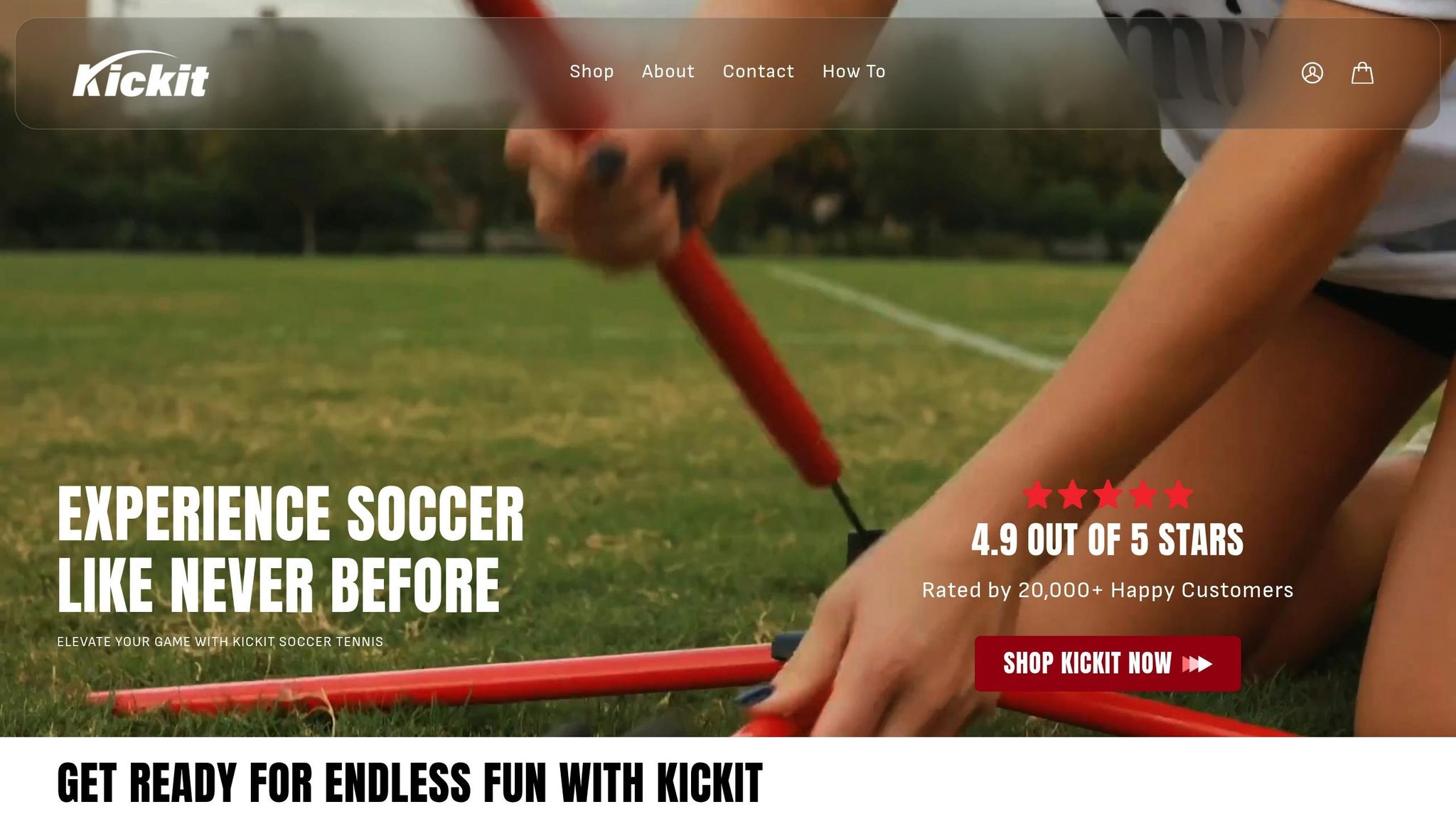
Kickit offers a variety of portable soccer solutions tailored for quick setup and use on multiple surfaces. Their products are designed to be assembled in under 60 seconds and work seamlessly on grass, sand, concrete, and more.
- Kickit Soccer Tennis ($79.99): This set brings a fresh spin to soccer with a net, a specially designed soccer tennis ball, a pump, and boundary markers. Its internal bungee cord system ensures hassle-free setup and takedown.
- Kickit Soccer Tennis Pro ($129.99): Perfect for competitive players, this doubles version offers added features for larger groups while maintaining portability for intense matches.
- Kickit Inferno Soccer Tennis ($129.99): A premium option crafted with advanced materials, this set caters to serious players who demand high-quality gear.
- Kickit Soccer Tennis Balls ($24.99): These balls are lighter than standard soccer balls, making them easier to control and ideal for soccer tennis gameplay.
Kickit products boast a 4.9 out of 5-star rating from over 20,000 customers. One Amazon reviewer, Mrs. Clare's Books, shared her experience of using the gear on road trips and camping adventures, noting its durability even after being assembled and disassembled more than 20 times.
Beyond traditional soccer training, Kickit’s gear is versatile enough for skill-building, family fun, and competitive play. Whether you're looking to sharpen your soccer skills or simply enjoy a game with friends and family, these products are a smart pick for anyone serious about portable soccer equipment.
Setup Instructions for Different Surfaces
Setting up portable soccer equipment properly depends on the type of surface you're playing on. Each terrain comes with its own challenges, so it's important to use the right techniques to ensure safety and smooth gameplay.
Location-Specific Setup Tips
Grass Surfaces are the most common and generally the easiest to work with. According to the Consumer Product Safety Commission (CPSC), all portable soccer goals must be anchored securely at all times. Use tools like angled stakes, pegs, auger-style anchors, or J-hook anchors, placing them through the holes in the ground shoes. Most accidents occur when goals are left unsupervised, so anchoring them firmly - ideally from the rear - can help prevent injuries. If the pegs stick out above ground level, make sure they're visible to avoid tripping hazards.
Sand and Beach Surfaces require a slightly different approach. Use pegs to anchor the goals securely, but insert them deeper than you would on grass since sand tends to shift more. For beach use, choose equipment with rust-resistant frames and flexible poles. After playing, wipe down the frame to remove sand and extend the life of your gear.
Hard Surfaces like concrete, asphalt, or indoor courts can be tricky since traditional stakes won’t work. Instead, use sandbags or counterweights to keep the goals stable. Always check the goal's specifications to ensure you’re using the right amount of weight for its size and structure.
Schoolyards and Parks often feature a mix of surface types, such as hard-packed dirt or artificial turf. These may require adjustments to your anchoring method. Before setting up, inspect the playing area and choose the best anchoring technique for the conditions.
Fast Setup and Takedown
Once you've chosen the right anchoring method, follow these steps for quick assembly and disassembly. Kickit products, for example, are designed to be set up in under 60 seconds with the right preparation.
Setup Process starts with familiarizing yourself with the equipment at home. Keep all parts organized in your carrying bag, with anchoring materials stored separately for easy access. Kickit’s internal bungee cord system simplifies the process by eliminating the need to thread cords through poles. Lay out the net and poles in the correct orientation, extend the poles to let the bungee system create tension, position boundary markers, and secure your anchors based on the surface type. This streamlined setup process is a favorite among users.
Efficient Takedown is just as important. Start by removing and storing all anchoring materials to avoid losing stakes or weights. Gradually release the tension to safely collapse the net and protect the bungee cords.
Weather Considerations can also affect setup time. On windy days, have your anchoring materials ready before setting up, as an unsecured goal can quickly become a safety hazard. In hot weather, consider using work gloves to handle metal components, which may heat up under the sun.
sbb-itb-8dc5da3
How to Maintain and Store Your Equipment
Taking care of your equipment isn't just about keeping it looking good - it helps extend its lifespan and saves you money on replacements. A little routine maintenance after every game or practice can make a big difference.
Cleaning and Care
Right after playing, make it a habit to air out your gear. This helps prevent unpleasant odors and keeps bacteria from building up. For a quick clean, use disinfectant wipes to remove dirt and residue from metal parts. For a deeper clean, grab a disinfectant spray and a soft brush to scrub away grime, then rinse everything thoroughly and let it air dry completely.
Different playing surfaces call for different cleaning strategies. If your gear has been exposed to sandy or salty environments, clean off all residue to avoid unnecessary wear and tear. On grass fields, focus on removing mud and grass stains from frames and nets using mild soap and water.
Be mindful of the materials you're cleaning. Synthetic balls can handle more vigorous scrubbing, while nets should be rinsed and fully dried to avoid mold. Steer clear of harsh chemicals, abrasive tools, and drying your gear in direct sunlight, as these can cause damage .
Once everything is clean, proper storage ensures your equipment stays in top condition.
Storage Methods
Always store your gear indoors in a dry space like a garage, shed, or closet. Good airflow and a stable temperature will help minimize odors, mildew, and pest problems.
Organize your equipment based on type. For portable goals, keep the poles straight and away from extreme heat or cold to avoid warping. Disassemble the goals when not in use, and store all parts in a carrying bag, keeping smaller pieces separate to avoid losing them. For soccer balls, slightly deflate them before long-term storage to reduce stress on the seams and panels.
Use clear, stackable bins or sealed containers to keep your gear organized and easy to find. Label each bin for quick identification, and consider wall-mounted racks to save space. Don’t forget to wipe down your equipment bags after each use to prevent mold from forming .
Lastly, make it a habit to check your stored gear regularly for any signs of mold, pests, or damage. Catching issues early means you can fix them before they get worse.
How to Improve Gameplay and Stay Safe
To get the most out of your game while staying safe, it's essential to combine the right equipment with smart safety practices and adaptable rules for players of all ages and abilities.
Safety Tips for Different Playing Surfaces
Every playing surface comes with its own set of challenges, so tailoring your safety measures is key. For grass fields, take the time to inspect the area for holes or uneven patches that could lead to injuries. As Summit Orthopedics puts it, "Uneven fields increase the risk of injury in outdoor soccer. If your child is playing outdoors, make sure the field is being checked for holes and other terrain risks."
On harder surfaces like concrete or asphalt, choose footwear that offers solid grip and cushioning to avoid slips and reduce the strain on your joints. Sand, while softer, presents its own risks, such as unstable footing that can lead to ankle injuries. Staying hydrated is equally important across all surfaces, as dehydration can affect muscle control and balance, making injuries more likely.
Game Modifications for All Ages and Skills
Once the playing area is safe, consider tweaking the game rules so everyone can join in, regardless of age or skill level. Simplify instructions, shorten the game duration, or focus on skill-building activities. These adjustments not only make the game more inclusive but also help reduce fatigue-related injuries. Plus, they fit seamlessly into quick setup scenarios, ensuring the game remains fun and accessible.
How to Set Up Safe Playing Areas
Creating a safe playing zone is just as important as the game itself. Follow these steps to minimize hazards and keep the focus on fun:
- Site Selection: Pick a flat, obstacle-free area. Remove rocks, toys, or anything else that could cause trips or falls.
- Boundary Marking: Clearly define the playing area using cones, garden spray chalk, or other temporary markers. Include key zones like penalty areas, goal zones, and midfield lines.
- Goal Anchoring: Secure portable goals using sandbags, water weights, or ground stakes to prevent tipping accidents. As Christopher Bayne, a Sports Medicine Orthopaedic Surgeon, advises, "Use padded goals to reduce head trauma."
- Surface Preparation: Smooth out uneven areas by filling holes or removing raised sections. For grass fields, regular mowing or portable synthetic turf can create a more even surface. If you're using artificial turf, ensure proper drainage to avoid slippery spots caused by water accumulation.
- Emergency Readiness: Always have a first aid kit within reach and make sure at least one adult is ready to provide basic medical care or contact emergency services if needed.
Conclusion: Main Points for Portable Soccer Games
Playing portable soccer games becomes a breeze with the right gear, proper setup, and a focus on safety. The key lies in selecting lightweight yet durable equipment that features secure anchoring, weather-resistant materials, and quick assembly designs that adapt to various surfaces.
No matter where you play - on grass, sand, concrete, or artificial turf - preparing the surface and prioritizing safety are non-negotiable. Always check for potential hazards, ensure equipment is securely anchored, and tweak the game rules to match the playing conditions and participants' skill levels. Regular maintenance, like cleaning, drying, and storing gear properly, not only extends the life of your equipment but also keeps it performing at its best.
Kickit's soccer tennis sets bring all these elements together. With a setup time of less than 60 seconds, compatibility with any surface, and complete game packages starting at $79.99, they ensure a seamless and enjoyable experience for casual players and competitive enthusiasts alike.
FAQs
How can I take care of portable soccer equipment to make it last longer?
To keep your portable soccer equipment in top shape, make cleaning a regular habit to remove dirt and debris. Always store your gear in a dry, well-ventilated area to avoid moisture damage. When not in use, disassemble any parts to minimize wear and tear. Regularly check your equipment for any signs of damage, and ensure it’s completely dry after use - especially if it’s been exposed to water or damp surfaces. These straightforward steps can help your gear last longer and stay ready for action.
How can I make portable soccer games enjoyable and inclusive for all ages and skill levels?
To make portable soccer games enjoyable and accessible for everyone, tailor the activities to fit a range of skill levels and age groups. For younger players or beginners, consider using smaller or lighter soccer balls to make the game easier and more fun. You can also add challenges with varying difficulty levels to keep things interesting for more experienced players. Emphasize teamwork, encourage creative play, and prioritize having fun over being competitive. This approach helps create an inviting and inclusive environment for all participants.
What safety steps should I follow when setting up portable soccer equipment on surfaces like grass, sand, or concrete?
To keep things safe and enjoyable, make sure the surface is stable and level before setting up any portable soccer equipment. If you're on grass or sand, use anchors or weights to hold the goals firmly in place and stop them from shifting. On concrete, non-slip mats or specialized anchors can help keep the equipment steady while also protecting the surface. Before starting the game, take a moment to ensure everything is securely set up and follow the manufacturer’s instructions for proper assembly.

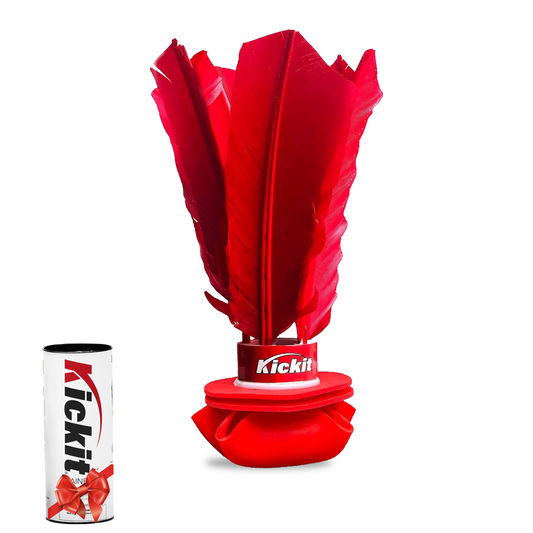
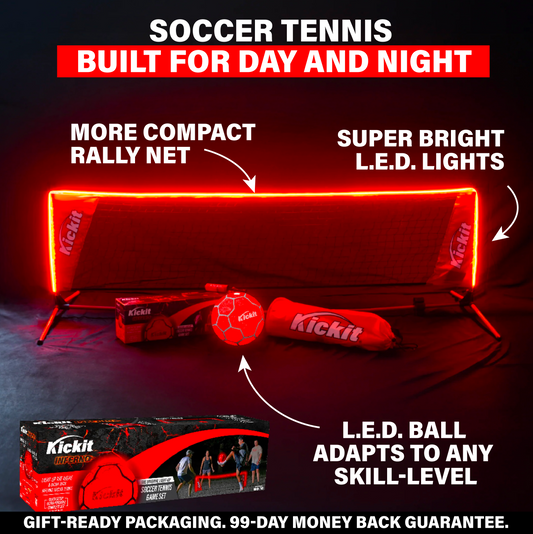
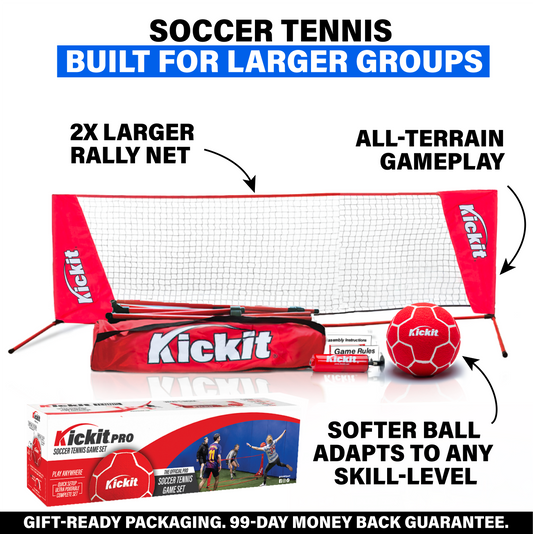
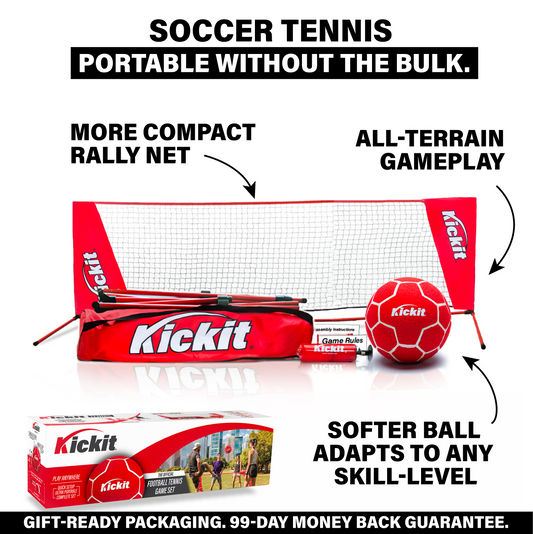
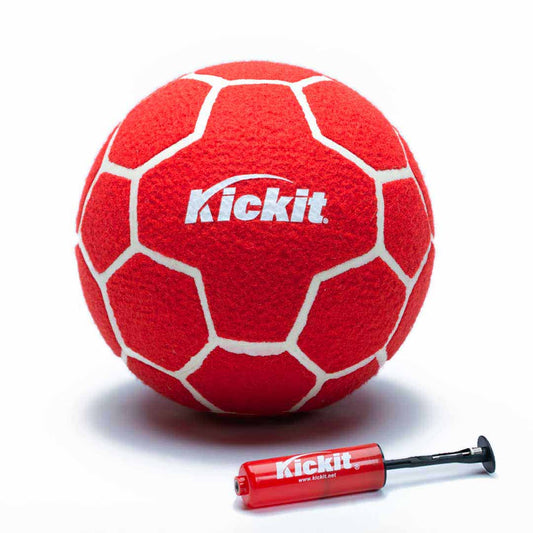
![[NEW] Inferno Kickit](http://kickit.net/cdn/shop/files/LED-Trainer_callouts.png?v=1761055297&width=533)

